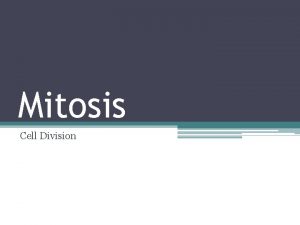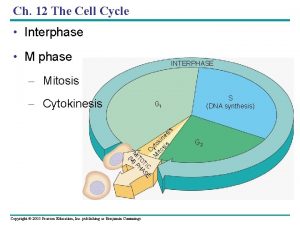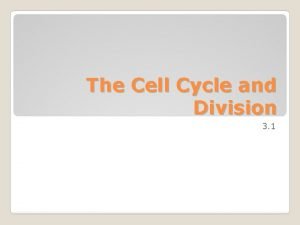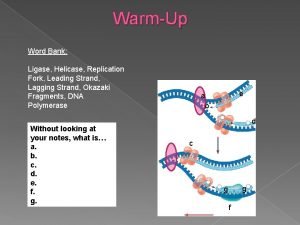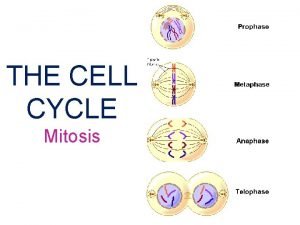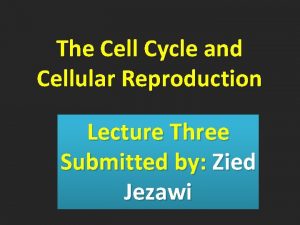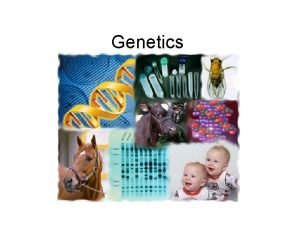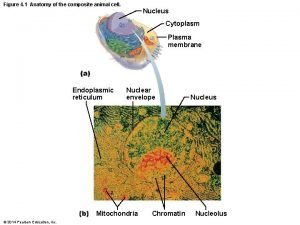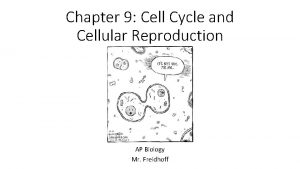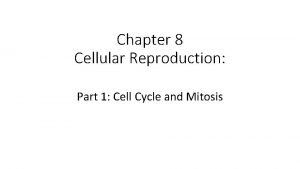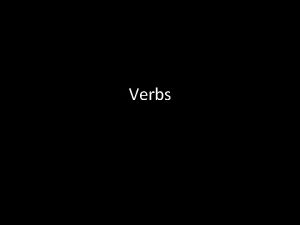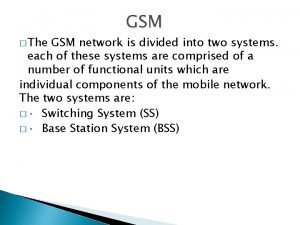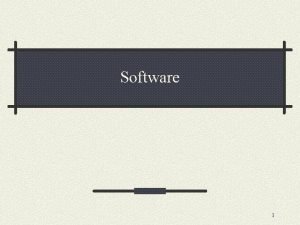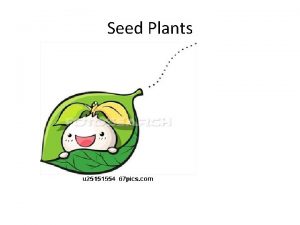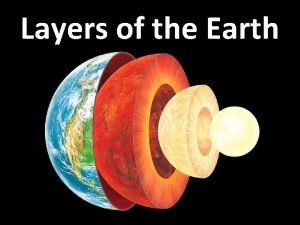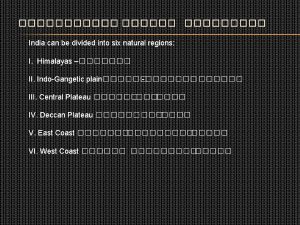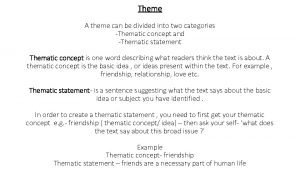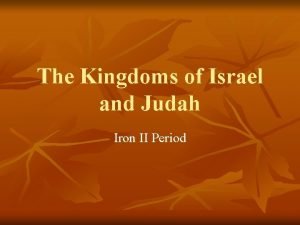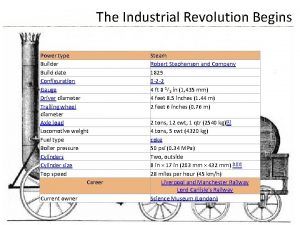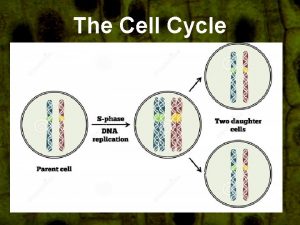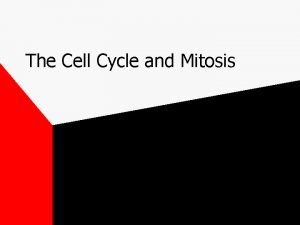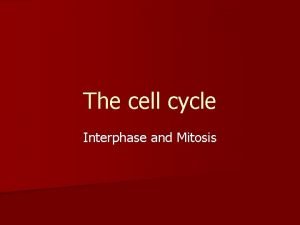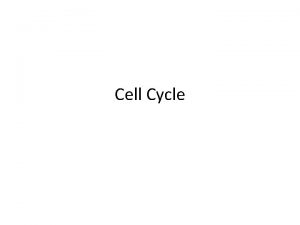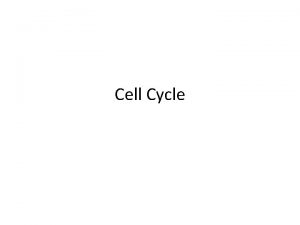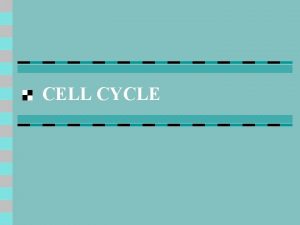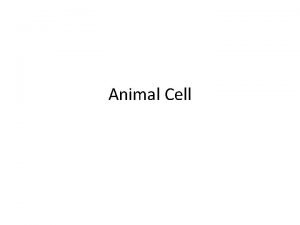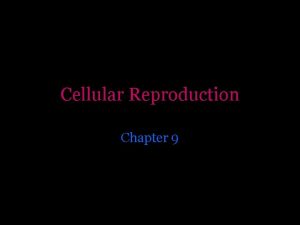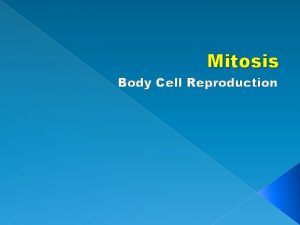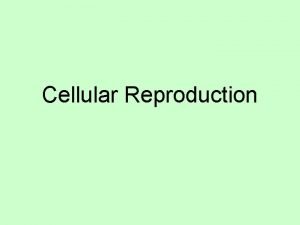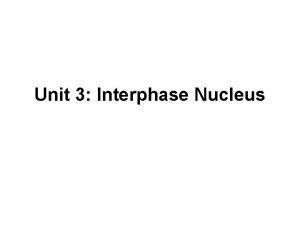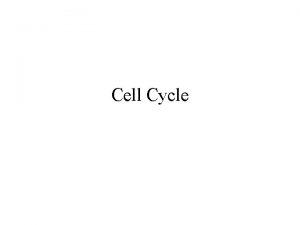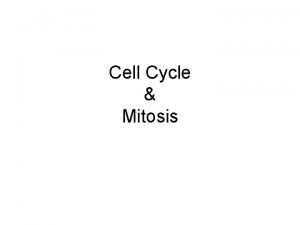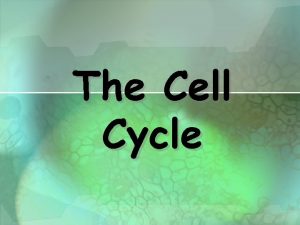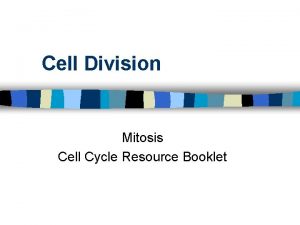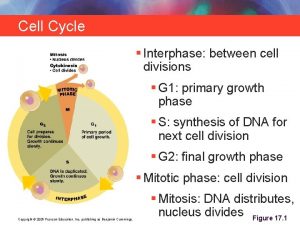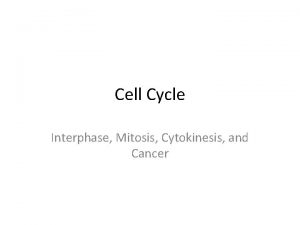Cell Reproduction The Cell Cycle Interphase Divided into

























- Slides: 25

Cell Reproduction

The Cell Cycle

Interphase § Divided into 3 phases: § G 1 = First Gap Phase – Cells grow and develop § S = Synthesis Phase - DNA replication occurs (i. e. chromosomes copied) in preparation for making new cells during mitosis § G 2 =Second Gap Phase = centrioles replicate, cell prepares for cell division, makes new cell parts

Mitosis n n n Mitosis- the process of producing body cells Cells produced are IDENTICAL to parent cell - have same number of chromosomes of parent cell Four phases n n Prophase Metaphase Anaphase Telophase

Prophase § Chromatin- shortens and thickens, chromosomes become visible § Nuclear membrane and nucleoli dissolves § Spindle fibers form § Centrioles move to poles

Prophase n n n Centriole Centromere Spindle Chromosome (chromatids) Aster

Metaphase § Chromosomes line-up in the middle (equator) of the cell

Anaphase § Chromosomes divide and are pulled to opposite poles

Telophase § Chromosomes reach the poles begin to uncoil forming chromatin § Nuclear membrane and nucleoli form around the 2 new nuclei § Spindle fibers disappear § Cytokinesis begins

Cytokinesis § The cytoplasm distributed equally between the 2 new cells § In animals, a cleavage furrow forms from outside in § In plants, a cell plate forms from inside Animal Plant

Cytokinesis in plants A cell plate made up of cell-wall components gradually forms in the middle of the cell.

Cytokinesis in animals A cleavage (or division) of the animal cell. The membrane pinches together forming 2 cells

figure 09 -08 b. jpg Figure 9. 8 – Part 2 Mitosis consists of several different phases.


Can You Identify the Stages of Mitosis? Put the following mitosis stages in the correct sequence

Mitosis vs Meiosis Characteristic Mitosis Cells produced Body cells (somatic cells) Chromosome Same as parent number cell Diploid 2 N Number of 1 divisions Number of cells 2 produced Meiosis Sex cells (gametes) Half number of parent cell Haploid N 2 4

The Results Products of Mitosis: 2 - 2 n cells 2 n 2 n 2 n Diploid Products of Meiosis: 4 - n cells 2 n n n Haploid

Meiosis- forming sex cells Process in which haploid cells are formed from diploid cells n In humans: Parent 46 46 Parent Diploid (2 N) n Chromosome number cut in half Ovum 23 Haploid (N) 23 Sperm Haploid (N) Fertilization Zygote 46 Diploid (2 N)

Chromosome Number Questions 1. If a horse retina cell has 36 chromosomes, how many does a horse sperm cell have? 2. If the n = 4 for fruit flies, how many chromosomes does a wing cell have?

Chromosome Number Questions 3. In streptomycin fungus n = 11. What is the diploid number for this species? 4. If n = 16 for goldfish how many chromosome in a fin cell? 5. If 2 n = 108 for black spruce trees then what is the haploid number?

Meiosis II

Crossing Over n Crossing Overexchange of genetic information by non- sister chromatids during meiosis

Mistakes in Meiosis n n Nondisjunction- failure of chromosomes to separate properly during meiosis Trisomy- inherits an extra chromosome Monosomy- is missing a chromosome Triploidy- inherits an extra set of homologous chromosomes

Downs Syndrome § Trisomy 21 § Wide variety of problems § Developmental delays § Heart defects § Immune problems § Vision, hearing respiratory issues § Can also be very talented

Turner’s Syndrome § Monosomy X § Problems include § Short stature § Lack of ovarian development § Prone to kidney, cardiovascular, and thyroid problems § Difficulties with spatial orientation & awareness
 Why is cell division important
Why is cell division important Interphase of cell cycle
Interphase of cell cycle Label the stages of the cell cycle.
Label the stages of the cell cycle. Cell cycle fill in the blank
Cell cycle fill in the blank Interphase animal cell
Interphase animal cell Plant cell mitosis
Plant cell mitosis Prokaryotes primarily reproduce
Prokaryotes primarily reproduce Daughter cell
Daughter cell Interphase cell
Interphase cell Interphase cell
Interphase cell Interphase cell
Interphase cell Interphase cell
Interphase cell The disadvantages of sexual reproduction
The disadvantages of sexual reproduction Sexual reproduction and asexual reproduction
Sexual reproduction and asexual reproduction Venn diagram asexual vs sexual reproduction
Venn diagram asexual vs sexual reproduction Infinitives latin
Infinitives latin The bss can be divided into two parts
The bss can be divided into two parts System software is divided into
System software is divided into Seed plants are divided into two groups
Seed plants are divided into two groups Into what parts is scotland divided geographically
Into what parts is scotland divided geographically What are the 3 layers of the earth
What are the 3 layers of the earth Six natural regions of india on map
Six natural regions of india on map The aca is divided into
The aca is divided into The text is divided into 2 main themes:
The text is divided into 2 main themes: Israel divided into two kingdoms
Israel divided into two kingdoms Multistory building divided into crowded apartments
Multistory building divided into crowded apartments
